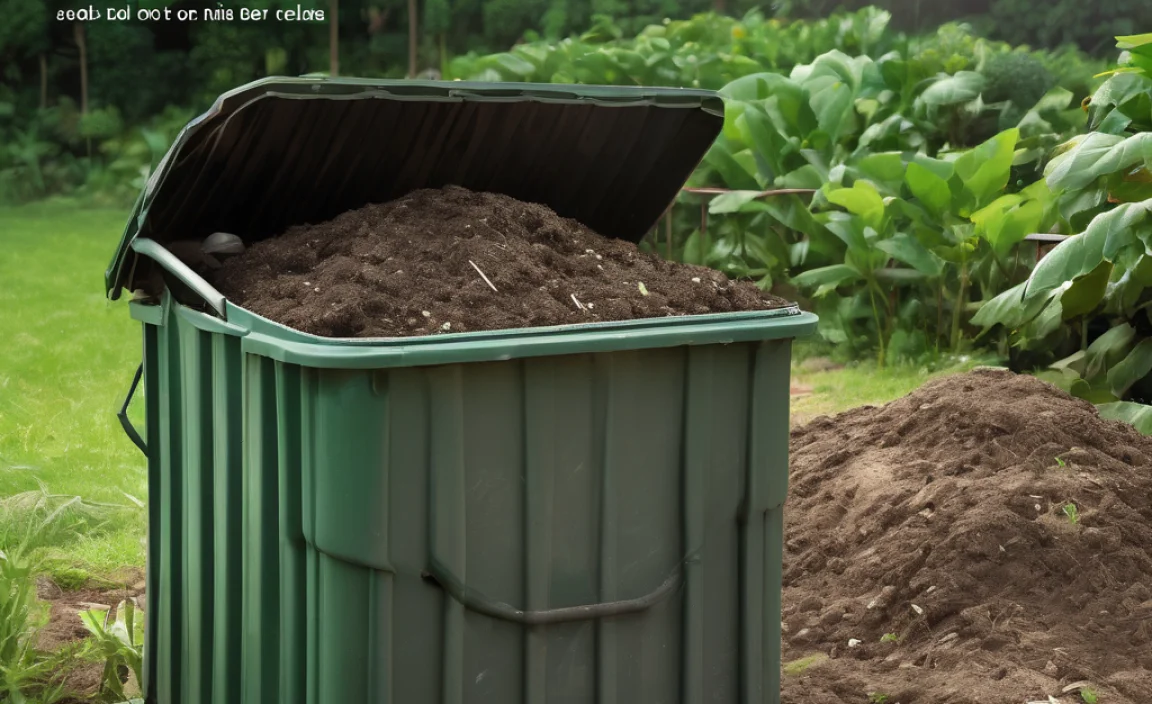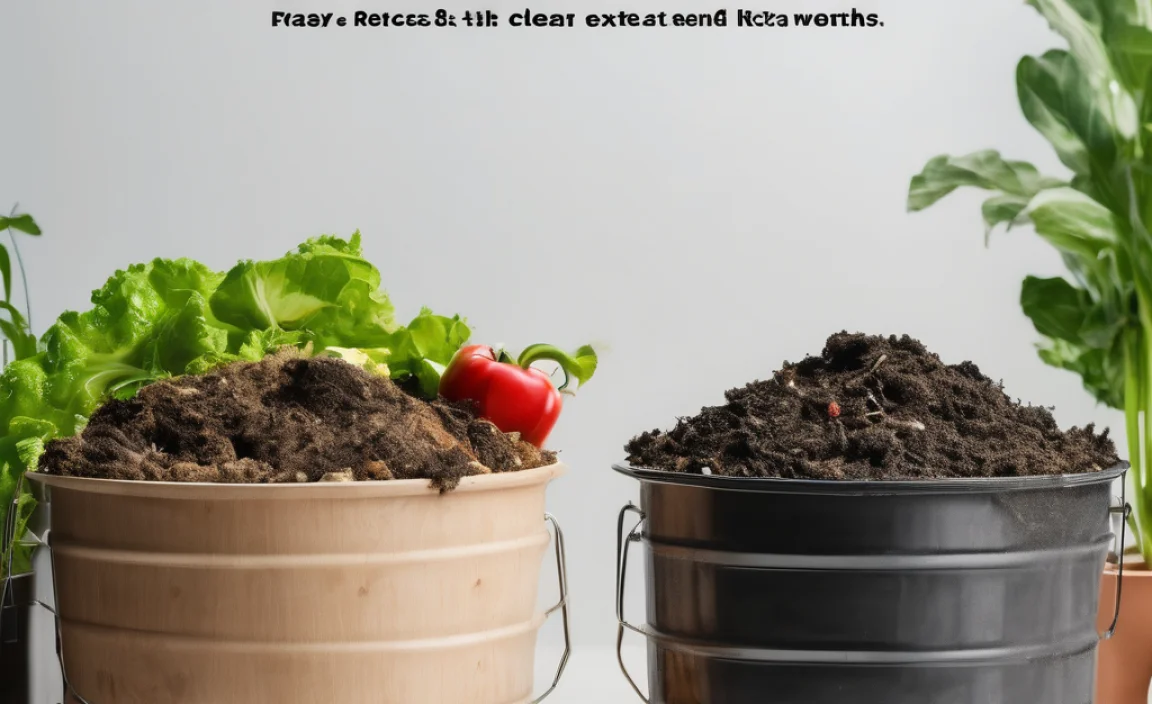Did you know worms can help turn trash into garden treasure? It’s true! Worms are tiny, wiggly creatures that love to eat food scraps. They turn these scraps into rich soil called compost. This process is known as vermicomposting. But how do you start? There are many vermicomposting methods to choose from. Each method is simple and can help nature while reducing waste.
Key Takeaways
- Vermicomposting is using worms to turn waste into compost.
- You can do vermicomposting indoors or outdoors.
- Different vermicomposting methods suit different needs.
- Red wigglers are the best worms for composting.
- Worms need a cozy home for vermicomposting methods.
Intro to Vermicomposting Methods
There are several ways to start vermicomposting. Simple boxes, or bins, can house the worms. These bins are usually made of plastic or wood. Choose a bin size based on your space. You’ll need bedding for the worms, like shredded newspaper. Red wiggler worms are the best choice for these bins. They love eating food scraps and turning them into compost. Make sure to add damp bedding to keep them happy. Keep the bin in a cool, dark place.
- Pick a bin size that fits your space.
- Use damp bedding to keep worms comfortable.
- Choose red wigglers for best results.
- Place bin in a cool, dark area.
- Regularly check moisture levels in the bin.
When you start, remember red wiggler worms eat a lot. They can eat half their weight in food scraps daily! This means less waste heading to the landfill. Composting also creates rich, healthy soil for your garden. Watching the worms work is both fun and educational. Fun Fact or Stats : Did you know worms have no eyes but can sense light?
Why Use Red Wigglers?
Red wigglers are the superheroes of worm composting. Why are they so special? These worms are tough and can eat a lot. They live near the soil surface, which makes them perfect for bins. Unlike other worms, red wigglers thrive in narrow spaces. They also reproduce quickly, so your composting can grow fast. These worms are easy to find in garden stores or online.
Setting Up a Worm Bin
Setting up a worm bin is easy and fun. First, pick a bin size that fits your room. Then, add some bedding. Newspaper, cardboard, or coconut fiber works well. Next, dampen the bedding so it’s moist but not soggy. After that, add your worms. Feed them kitchen scraps like fruit peels and veggie bits. Avoid meat, dairy, and oily foods, which are bad for worms. Cover the food with bedding to avoid smells.
Caring for Your Worms
How do you care for your worms once they’re home? Keep an eye on the moisture level. Too wet, and the worms could drown; too dry, and they might dehydrate. Feed your worms regularly but avoid overfeeding. Check the bin’s temperature. Worms work best in temperatures between 55-77°F. If it’s too hot or cold, move your bin to a better spot.
Outdoor Vermicomposting Methods
Vermicomposting isn’t just for indoors. You can do it outside too! Outdoor bins can be larger and hold more worms. You might want a wooden or plastic bin with a lid. The lid keeps out rain and unwanted pests. Start by choosing a shady spot in your yard. Fill the bin with bedding and worms, just like indoor bins. Add food scraps, and let the worms do their magic.
- Choose a large bin for more worms.
- Keep the bin in a shady area.
- Use a lid to protect from rain.
- Add bedding and red wigglers.
- Feed with plant-based scraps regularly.
Outdoor composting can handle more waste than indoor bins. It’s perfect for families or those with big gardens. Composting in the yard adds nutrients to the soil and helps plants grow. It’s also a great way to use garden waste like leaves and grass clippings. Fun Fact or Stats : Worms can eat over half their weight in food waste each day!
Choosing the Right Bin Material
What material is best for outdoor bins? Wood and plastic are popular choices. Wooden bins blend in well with gardens. They are sturdy but can rot over time. Plastic bins are weather-resistant and long-lasting. They’re also easy to move around. If you like DIY projects, you can build your own bin. Use untreated wood to avoid chemicals that can harm worms.
Protecting Your Worms Outdoors
Outdoor worms need protection from weather and pests. A lid is essential to keep rainwater out. Too much water can drown your worms. Keep the bin away from direct sunlight to prevent overheating. In colder months, insulate the bin with straw or leaves. Watch out for pests like rodents or birds. They might try to sneak in for a snack!
Feeding Your Outdoor Worms
Feeding outdoor worms is easy. Collect kitchen scraps like fruit peels and vegetable bits. You can also add small amounts of coffee grounds and eggshells. Avoid oily foods, meat, and dairy. These attract pests and harm worms. Bury food scraps under the bedding to reduce smells. Check the bin weekly to ensure the worms have enough food and bedding.
Worm Towers for Small Spaces
What if you have limited space? Try a worm tower! A worm tower is a vertical composter. It fits in small gardens or on balconies. To make one, start with a large tube, like PVC. Bury it halfway in a garden bed. Drill holes in the sides for worms to enter and exit. Add bedding, worms, and food scraps inside. The worms will come and go, breaking down scraps and enriching the soil.
- Use a large tube like PVC.
- Bury the tube halfway in the soil.
- Drill holes for worm access.
- Add bedding and food scraps.
- Perfect for small spaces or gardens.
Worm towers are a unique way to compost in small areas. They help improve soil directly in garden beds. This method is great for apartment dwellers or anyone with a small yard. Worm towers are low-maintenance, needing only occasional feeding. Fun Fact or Stats : Worm towers can also help aerate garden soil!
Building a Worm Tower
Building a worm tower is simple and fun. First, find a large tube, like a PVC pipe. Make sure it’s about two feet long. Drill small holes along the sides. These give worms room to move. Bury half of the tube in your garden. Inside, add bedding and red wigglers. Cover the top to keep out rain and pests. Add food scraps, and let the worms work.
Benefits of Worm Towers
Worm towers offer many benefits. They fit in tight spaces, making them ideal for urban gardeners. By adding them to garden beds, they enrich the soil nearby. Worm towers are also low-maintenance. You only need to add food scraps occasionally. The worms do the rest. This method encourages natural worm activity in your garden, promoting soil health.
Maintaining Your Worm Tower
How do you maintain a worm tower? It’s quite simple. Check the tower every couple of weeks. Ensure there’s enough food and bedding inside. The bedding should stay moist but not soggy. Add food scraps regularly. Worms will come and go as they please, so there’s no need to worry about overpopulation. If the tower starts to smell, add more bedding to balance it out.
Comparing Vermicomposting Methods
Let’s compare different vermicomposting methods. Each method has unique benefits and challenges. Here’s a handy table to help you choose the best method for you:
| Method | Best For | Space Needed | Maintenance |
|---|---|---|---|
| Indoor Bin | Small homes | Minimal | Moderate |
| Outdoor Bin | Large families | Moderate | Low |
| Worm Tower | Small gardens | Minimal | Low |
| DIY Wooden Bin | Garden enthusiasts | Flexible | Moderate |
Choosing a method depends on your space and needs. Indoor bins are great for apartments or small homes. Outdoor bins suit families with more waste. Worm towers work well for small gardens. DIY wooden bins are for those who love building. Each method helps reduce waste and enrich the soil. Fun Fact or Stats : Vermicomposting can reduce household waste by up to 30%!
Indoor vs. Outdoor Composting
Indoor and outdoor composting each have benefits. Indoor bins are perfect for small homes. They’re tidy and easy to manage. Outdoor bins can handle more waste but need more room. They can process garden waste, too. Both methods reduce trash and make rich soil. Choose based on your available space and how much waste you have.
Worm Towers vs. Traditional Bins
Worm towers and traditional bins work differently. Towers fit in small spaces and are low-maintenance. They’re great for enriching garden beds directly. Traditional bins need more attention. They handle larger amounts of waste. Both methods help cut down on trash and make soil healthier. Your choice depends on space and time availability.
Customizing Your Composting Method
Can you customize your composting method? Absolutely! Choose a method that fits your lifestyle. If you love DIY, build your own wooden bin. If space is tight, try a worm tower. Combine methods if you have a large garden. Mix and match to find what works best. Vermicomposting can be flexible and fun. It adapts to your needs.
Conclusion
Vermicomposting is a fun and eco-friendly way to reduce waste. By using simple vermicomposting methods, you can turn scraps into garden gold. Whether indoor or outdoor, each method suits different needs. Worms make it all possible with their hard work. Start today and watch nature work magic in your garden!
FAQs
Question: What are vermicomposting methods?
Answer: Vermicomposting methods use worms to turn food scraps into compost. There are several ways to do this, like using indoor bins, outdoor bins, or worm towers. Each method helps reduce waste and enriches soil for better gardening.
Question: Why use red wigglers for vermicomposting?
Answer: Red wigglers are excellent for vermicomposting methods because they eat a lot and reproduce quickly. They thrive in shallow spaces like bins, making them ideal for composting food scraps indoors or outdoors.
Question: How do I maintain an outdoor worm bin?
Answer: Maintain an outdoor worm bin by keeping it in a shady spot. Use a lid to protect from rain and pests. Check moisture levels and add food scraps regularly. Insulate the bin in cold weather for happy worms.
Question: Can I do vermicomposting in small spaces?
Answer: Yes, vermicomposting works in small spaces! Use indoor bins or worm towers. These methods take up minimal room and are easy to manage. They’re perfect for apartments or homes with little outdoor space.
Question: What can I feed my composting worms?
Answer: Feed worms fruit peels, vegetable scraps, coffee grounds, and eggshells. Avoid meat, dairy, and oily foods. These can attract pests and harm the worms. Bury food scraps under the bedding to keep smells away.
Question: How do worm towers work in gardens?
Answer: Worm towers are vertical composters placed in garden beds. They allow worms to come and go, breaking down food scraps and enriching the soil. Towers are low-maintenance and perfect for small gardens or urban spaces.


